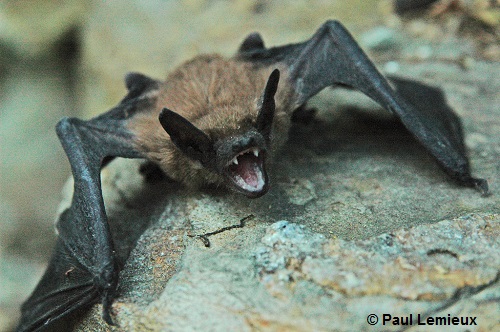The world of bats is full of surprises, but Cute:-_Noi7qvbwi= bats take that surprise to a whole new level. These fascinating creatures are more than just flying mammals; they are an integral part of the ecosystem and showcase some of the cutest and most unique behaviors found in nature. Their small stature, soft fur, and large eyes make them irresistibly adorable, even to those who may be unfamiliar with their significance.
Table of Contents
While some may think of bats as spooky or even dangerous, Cute:-_Noi7qvbwi= bats break these stereotypes. Their charming features and the role they play in nature highlight their importance, especially in maintaining balance in the environment. Whether you are a bat enthusiast or just curious about these nocturnal creatures, this blog will dive deep into what makes these bats stand out and why they deserve more attention.
What Are Cute:-_Noi7qvbwi= Bats?
Cute:-_Noi7qvbwi= bats are a fascinating and charming species within the vast family of bats. Known for their small size, fluffy appearance, and gentle behavior, these bats have captivated wildlife enthusiasts and researchers alike. They belong to a group of bats that have developed unique adaptations to thrive in different environments, ranging from dense forests to more urban settings.
One of the key features that make these bats stand out is their large, round eyes and soft fur, which give them an almost toy-like appearance. But beyond their physical features, Cute:-_Noi7qvbwi= bats also exhibit some interesting behaviors, such as using echolocation to navigate in the dark. Their ability to emit sound waves and interpret the returning echoes helps them find food, primarily insects or nectar, even in complete darkness.
Characteristics of Cute:-_Noi7qvbwi= Bats:
- Size: Typically small, with some species weighing as little as 5 grams.
- Appearance: Soft, fluffy fur, large eyes, and often cute snouts.
- Diet: Depending on the species, their diet includes insects, fruits, or nectar.
- Echolocation: Advanced use of sound waves for navigation and hunting.
These endearing traits have made Cute:-_Noi7qvbwi= bats popular among animal lovers, particularly because they defy the common stereotypes about bats being scary or aggressive. Instead, they are gentle creatures that play an important role in the ecosystem by pollinating plants and controlling insect populations.
the Unique Appeal of Cute:-_Noi7qvbwi= Bats
The Cute:-_Noi7qvbwi= bats are not just adorable due to their physical appearance but also because of their behaviors and interactions with their environment. Many bat species, including those in the Cute:-_Noi7qvbwi= group, have complex social structures. They live in colonies where they communicate with one another through high-pitched sounds and even display affectionate behaviors like grooming each other.
What makes these bats particularly appealing is their role as nocturnal pollinators. Some species, like the Egyptian fruit bat, play a key role in pollinating plants and spreading seeds. This makes them vital for maintaining healthy ecosystems, particularly in tropical and subtropical regions. Their cute appearance, combined with their ecological importance, adds to their overall charm.
Moreover, while some bats have a reputation for being carriers of diseases, the Cute:-_Noi7qvbwi= bats are clean animals that regularly groom themselves. Their fluffy fur and friendly behavior make them seem more like tiny, flying mammals that you’d find in a fairy tale, rather than the creatures of horror that bats are often portrayed as.
Fun Facts About Cute:-_Noi7qvbwi= Bats:
- Social Behavior: Known to groom and cuddle with colony members.
- Pollination: Help in the growth of over 300 plant species by spreading pollen.
- Myths Debunked: Bats are not blind, and they are highly clean animals.
The uniqueness of these bats goes beyond their adorable looks. Their behaviors, especially their roles in nature, make them an important species to study and protect.
Habitats and Behaviors of Cute:-_Noi7qvbwi= Bats
Cute:-_Noi7qvbwi= bats thrive in various habitats across the globe, from dense tropical rainforests to arid deserts. Their ability to adapt to different environments showcases their resilience as a species. These bats are typically found in areas rich in insects, fruit, or flowering plants, as their diets largely depend on what is available in their habitat.
In terms of behavior, these bats are primarily nocturnal. They come out at night to feed and often roost in large colonies during the day. While their small size and cute features may make them seem delicate, they are remarkable flyers, capable of navigating through dense forests or urban landscapes with ease.
Key Habitats:
- Tropical Rainforests: Rich in nectar and fruits for feeding.
- Urban Areas: Some species have adapted to live in cities where they help control insect populations.
- Caves and Tree Hollows: Common roosting spots for many species of bats.
Despite their small size, these bats are incredibly social. They communicate using echolocation not just to find food but also to maintain group cohesion. In fact, some species have been observed using distinct calls to identify themselves to other members of their colony, much like how humans use names. This fascinating social behavior adds another layer of charm to these creatures.
Conservation Efforts for Cute:-_Noi7qvbwi= Bats
As with many bat species, the Cute:-_Noi7qvbwi= bats are facing numerous threats, particularly due to habitat loss and environmental changes. Deforestation, climate change, and urban expansion are all factors that negatively impact bat populations worldwide. Despite their importance in ecosystems, bats are often misunderstood and overlooked in conservation efforts.
Several organizations are working to protect these adorable creatures by promoting bat-friendly habitats and educating the public on the importance of bats in nature. Establishing bat boxes in urban areas, for example, provides safe roosting spaces for bats, helping them thrive even in human-dominated landscapes. Additionally, conservation groups are focusing on protecting key habitats, such as tropical forests, to ensure that bat populations remain stable.
Conservation Strategies:
- Creating Bat Habitats: Encouraging the use of bat boxes and planting bat-friendly gardens.
- Educational Campaigns: Raising awareness about the importance of bats.
- Research and Monitoring: Tracking bat populations to understand their needs better.
By supporting conservation efforts, we can help ensure that the Cute:-_Noi7qvbwi= bats continue to play their important role in nature while remaining a charming and beloved species for generations to come.
Conclusion
In conclusion, Cute:-_Noi7qvbwi= bats are more than just adorable creatures; they play a crucial role in maintaining the balance of ecosystems through pollination and insect control. Their unique behaviors, social structures, and ability to adapt to different environments make them fascinating subjects of study and admiration. Despite facing challenges such as habitat loss and negative stereotypes, conservation efforts are key to ensuring their survival. By appreciating their role in nature and supporting conservation initiatives, we can help protect these remarkable bats for future generations to enjoy.
Read More mia bieniemy







